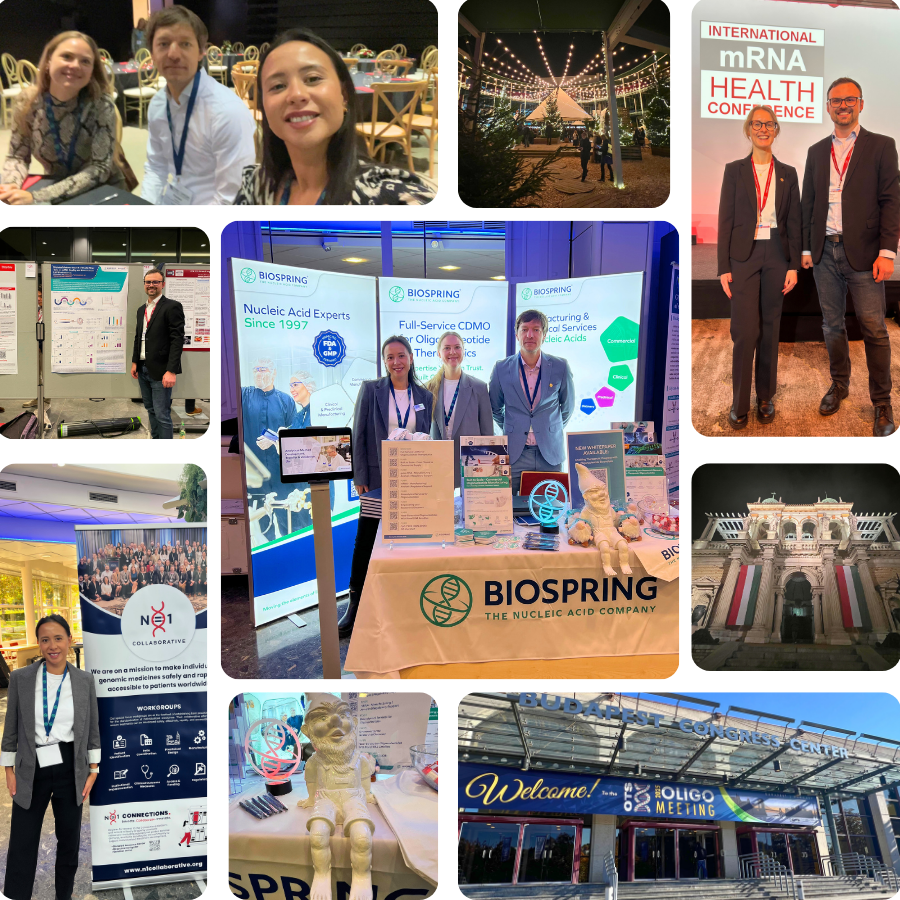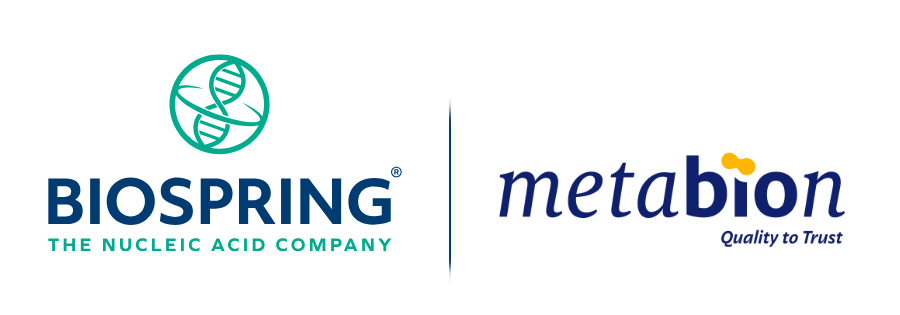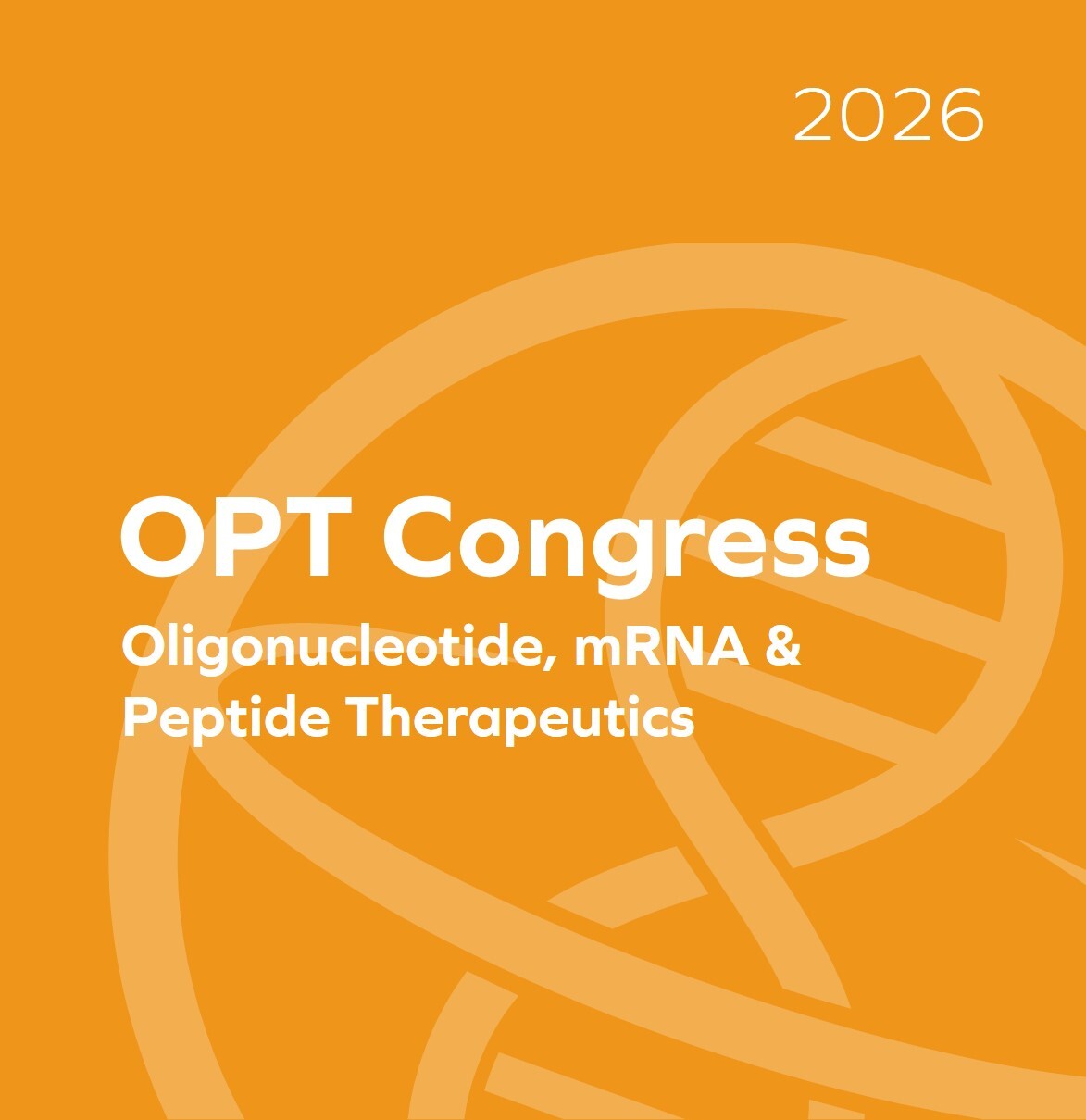This month's highlight

Newsletter
November 2025
Osmolyte-Assisted Ultrafiltration: Expanding What’s Possible at Commercial Scale
As oligonucleotide drug substances advance towards commercial production, the demand for higher concentrations and larger batch sizes continues to grow. Traditional ultrafiltration and diafiltration (UF/DF) approaches often reach physical limits at concentrations between 40 and 150 mg/mL, making it necessary to add extra concentration steps for certain formulations. These additional steps increase process complexity, cost, and time.
To overcome these constraints, BioSpring has developed a novel osmolyte-assisted UF/DF method that enhances flux and enables significantly higher concentration endpoints. The concept is based on introducing a polymeric osmolyte into the permeate side of the filtration unit, creating a controlled osmotic pressure difference. This accelerates solvent removal and allows the retentate to reach much higher product concentrations; in some cases, more than five-fold higher than levels achievable with conventional UF methods.
Laboratory and pilot-scale studies have demonstrated concentrations up to approximately 220–380 g/L across various oligonucleotide types, with minimal product breakthrough (< 1%). The process has since been scaled to multi-kilogram quantities, confirming both reproducibility and scalability. Beyond the technical performance, the implications for manufacturing are substantial:
For lyophilized APIs, higher UF/DF concentrations translate into significantly larger batch sizes without changing lyophilizer loading capacity. For solution APIs, the method can eliminate additional vacuum concentration steps, reducing handling time and minimizing the risk of degradation.
The osmolyte itself is a pharmacopeia-listed excipient with established toxicological data. Ongoing analytical work confirms that carryover levels after UF/DF are below the reporting limit of process-related impurities, according to ICH Q3.
The technology is now available for implementation under both preclinical and GMP conditions and commercial production.
Earlier this month, BioSpring hosted a webinar in which Dr. Sven Warhaut (Vice Head of Manufacturing) presented the osmolyte-assisted UF/DF method. The recording is now available on demand here.
For BioSpring’s partners, this advancement offers a practical advantage at the interface between process development and commercial manufacturing, boosting productivity and simplifying downstream operations while maintaining the highest product quality.
This month's service in focus
Validating Oligonucleotide Manufacturing Processes and Methods
Process validation is where process understanding turns into demonstrated process control. For therapeutic oligonucleotides, it means showing that every manufacturing and analytical step consistently delivers material of defined quality.
At BioSpring, we approach validation as a continuous, science-based lifecycle that begins in process development and extends through commercial manufacturing. Each stage builds on the previous one, from early risk assessment and process characterization to the verification of proven ranges during full-scale production.
Our validation activities are closely linked with analytical method development to ensure that every result is accurate, precise, and regulatory-compliant. This integrated approach provides our partners with transparent data, traceable documentation, and confidence in process robustness long after market launch.
By combining deep process knowledge, in-depth risk analyses, and extensive characterization studies, we establish robust control strategies that ensure consistency, regulatory compliance, and confidence at every stage of production.
To learn more, contact us directly.
Our process validation expertise Includes:
-
Development of comprehensive Process Control Strategies (PCS)
-
Risk analyses and definition of critical process parameters
-
Process characterization to establish proven ranges
-
Process Performance Qualification (PPQ) for consistent, large-scale operation
-
Analytical method validation to confirm accuracy and precision of quality data
-
Continued Process Verification (CPV) and Product Quality Reviews (PQRs) to ensure long-term stability and compliance

Research insights
Getting more out of oligo mass data: insights from deconvolution analysis
When developing or approving oligonucleotide therapeutics, every detail in downstream analytics matters. In his latest Analytical Methods paper, which made it to the cover of the journal, Dr. Michael Rühl (Senior QC Researcher at BioSpring) analyzes how seemingly subtle choices in mass-spectrometry deconvolution, such as algorithm type, input mass range, and selected charge states, can influence the reported mass and impurity profile of synthetic oligonucleotides.
Through side-by-side evaluation of Bayesian and maximum-entropy methods across test oligos ranging from 20 to 200 nucleotides, Michael reveals how parameter selection can introduce bias from adducts or backbone fragmentation. His results include practical recommendations to optimize deconvolution settings for different size ranges and sample types.
For your drug development or QC teams, these findings translate into greater confidence in mass-based characterization data, minimizing ambiguity, supporting method reproducibility, and accelerating decisions on impurity thresholds or batch acceptance.
Published: Analytical Methods, 2025,17, 8266-8271
To learn more, don't hesitate to contact us.


Get to know our experts
Sven Warhaut, PhD
Vice Head of Manufacturing
Sven Warhaut is a chemist by training with a PhD in the field of structure and function of nucleic acids. Sven joined BioSpring in 2017 as Scientific Project Lead in GMP and Large Scale Production. He has worked on process scale-up and manufacturing of various oligonucleotides from clinical stage to commercial production. Since 2023 Sven supports expansion projects and continuous improvement of BioSpring’s manufacturing sites.
 What drives you in your work at BioSpring?
What drives you in your work at BioSpring?
“I’m motivated by the fact that our work directly contributes to making new medicines available for patients. What I enjoy most is taking complex scientific processes and turning them into something reproducible and robust. And I appreciate the challenge of working in cross-functional teams, finding solutions together that none of us could achieve alone.”
You were closely involved in developing BioSpring’s new UF method. What makes this advance important for our clients?
“The new UF method allows us to reach much higher concentrations, which directly translates into larger batch sizes and better throughput. It also reduces the need for secondary concentration steps, which saves time and cost and lowers handling risk. Overall, it shows how we continue to optimize manufacturing efficiency for our clients, especially as programs scale toward commercial supply.”
From your perspective, what does it take to run large-scale oligonucleotide manufacturing successfully?
“Large-scale oligo manufacturing requires deep process knowledge and great care in every step. Reliability is essential every day, every batch. It also depends on close coordination between development, analytics, and large-scale production to ensure the highest possible quality. And ultimately, success comes from a strong commitment to continuous improvement and compliance across the entire team.”
Is there a project or milestone that you’re particularly proud of?
“One milestone I’m very proud of was a fast-track process transfer to GMP for a client program. The timelines were extremely ambitious, but the teams collaborated really great and delivered a reliable process under pressure. I’m also proud of the rapid expansion of our new sites, including the ramp-up at site II. Coordinating our teams in such a controlled way shows what BioSpring can achieve together.”
What makes BioSpring’s manufacturing approach unique in your view?
“I think it’s the combination of deep experience across many oligonucleotide chemistries and development stages, together with a culture of accountability. People here really take ownership. And we maintain a flexibility and service mentality that allows us to adapt quickly to what clients need without compromising quality.”
Behind the Scenes
BioSpring at Conferences
Conferences are where we reconnect with familiar faces and meet new ones who share our interest in oligonucleotides. The oligonucleotide community is steadily expanding, fueled by breakthroughs in therapeutic development and innovation. Between booth setup, discussions, and evening receptions, these snapshots capture what makes being part of this field so rewarding: collaboration, curiosity, and exciting discussions!
.jpg?width=1200&length=1200&name=Image%20(9).jpg)
.jpg?width=1200&length=1200&name=Image%20(28).jpg)
.jpg?width=1200&length=1200&name=Image%20(18).jpg)
.jpg?width=1200&length=1200&name=Image%20(20).jpg)
.jpg?width=1200&length=1200&name=Image%20(12).jpg)

In case you missed it
Recent News
BioSpring and Luxna Biotech: Advancing XNA-Based Oligonucleotide Therapeutics

BioSpring has entered a non-exclusive global license agreement with Luxna Biotech to manufacture oligonucleotides using Luxna’s XNA amidite technology. This collaboration enables the development of next-generation oligonucleotides with improved binding affinity, stability, and therapeutic potential, expanding BioSpring’s chemistry toolbox for our clients' innovative drug programs. Read more in our press release.
BioSpring and metabion Join Forces to Accelerate Oligonucleotide Development

BioSpring and metabion have announced a collaboration to connect early oligonucleotide discovery with clinical and commercial manufacturing. The partnership leverages metabion’s high-throughput synthesis capabilities and BioSpring’s comprehensive manufacturing and analytical expertise, offering developers a seamless path from research to GMP production. Read more in our press release.
Whether you're looking for details on manufacturing, analytics, or our integrated services, our updated site helps you get the right information quickly and effortlessly.
Where to find us next
Upcoming Events
- All
- attending
No results found

